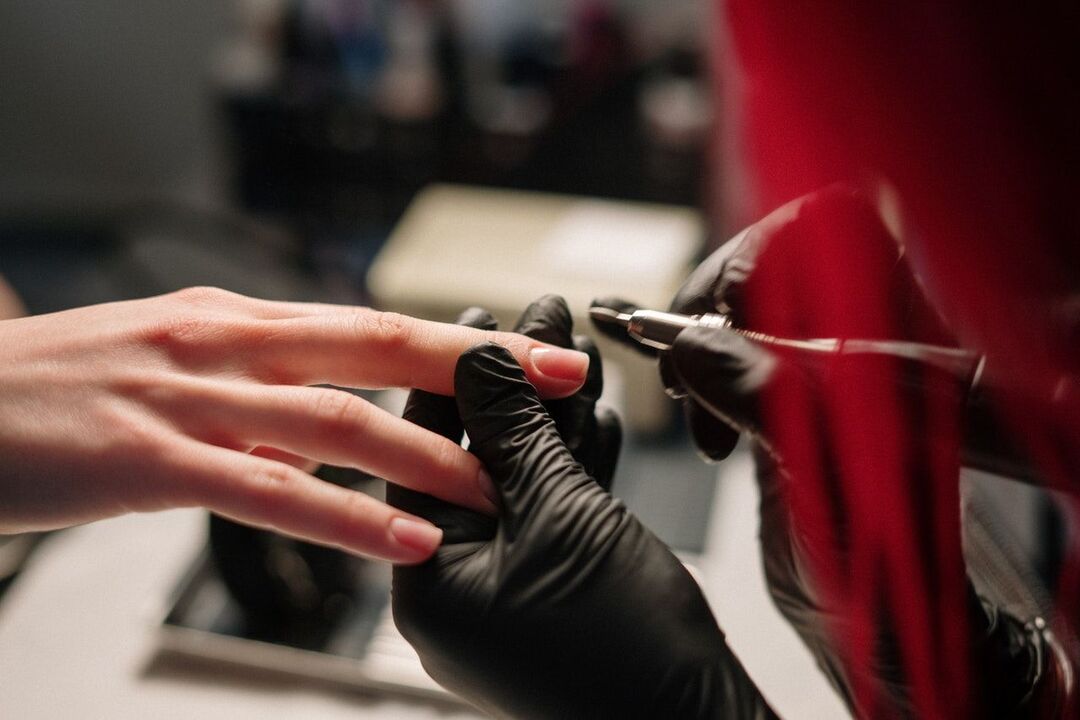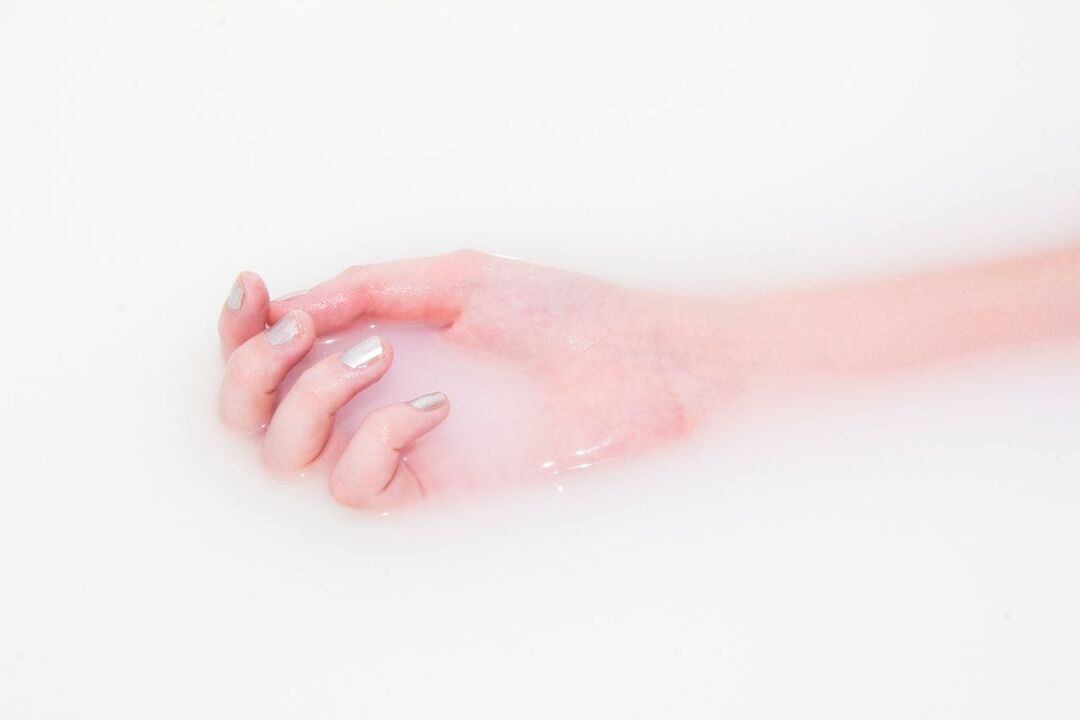
Why does fungus appear on nails? What are the signs of the disease? This disease destroys the nail plate and causes many problems. Our medical experts answer frequently asked questions and tell us how to get quick treatment with effective medicines.
According to statistics, 20% of the Earth's total population is susceptible to nail infections caused by parasitic fungi. This condition is called onychomycosis and is caused by fungus on the nail.
What is nail fungus?
The disease is infectious and spreads from person to person as well as through contact and in the home through shared objects. Fungal infections attack the nail plate and erode it, destroying the nail.
Toenail fungus most commonly occurs in toenails because the feet are more susceptible to negative effects. However, the development of pathology is preceded by a weakening of the immune system, which leads to a decrease in the body's defenses, which does not allow the immune system to be sufficiently effective in the fight againstpathogens.
Several types of fungal infections cause onychomycosis in the hands and feet:
- dermatological cells;
- yeast;
- moldy;
- trichophytosis;
- microsporia;
- athlete's foot.
All fungal pathogens fall into two broad categories:
- Cause disease.
- There are conditions that cause disease.
Pathogenic microorganisms are microorganisms that invade from outside and cause harm to human life. Conditional pathogens are those that normally live on the skin, mucus and keratin areas of the human body, for example fungi of the genus Candida.
Normally, the body coexists symbiotically with opportunistic pathogenic microorganisms. But with a decrease in immunity and favorable conditions, these organisms begin to grow uncontrollably, which leads to the emergence of a pathological process.
Why does fungus appear on nails?
Common causes of fungal diseases may include the following:
- weakened immune system;
- concurrent chronic illness (eg, eczema, diabetes);
- failure to comply with personal hygiene rules;
- visiting places where fungal infections are concentrated (baths, saunas, swimming pools, public baths, water parks);
- Wearing closed shoes causes your feet to sweat a lot;
- old age (after age 65, natural immunity decreases);
- Working environmental conditions (working in a humid environment, high room temperature, radiation, dusty environment).

In such conditions, nail fungus develops on the hands and feet. It is noted that this disease is also distributed by gender - men are affected almost 3 times more often than women.
How do pathogens get into the nail plate?
The keratin sheet itself is not susceptible to fungal pathogens. For an infection to begin to develop, its integrity must be compromised. There are three main routes by which fungal microorganisms enter:
- Through the nail plate due to damage and damage to the keratin layer;
- Through the sublingual groove;
- Through the proximal nail fold.
Conditionally pathogenic organisms often cause inflammation of the epidermis.
What types of nail fungus are there?
The disease has three types or stages, each with different severity:
- The normal type. Thin yellow-gray stripes appear on the nail plate, brittleness and fragility appear, but hyperkeratosis and subungual hyperkeratosis do not occur.
- Hypertrophic type. It appears when there is no treatment or is chosen incorrectly and ineffectively. First of all, keratinization occurs under the nail, leading to thickening, which lasts long after successful treatment.
- Atrophic type. The most difficult stage of the disease. The nail becomes thinner, brittle and brittle, changes color to dark gray-brown, over time its growth is interrupted and complete separation from the nail bed occurs.
Finding out the type of disease will allow you to decide how to treat nail fungus.
What are the symptoms of nail fungus?
Signs of fungal infection:
- the appearance of light yellow or gray stripes and spots on the nail plate, giving its appearance a painful appearance;
- changes the color of the plate to yellow, brown and brown, which over time turns black;
- the epidermis and the proximal part of the apex are inflamed;
- the sheet thickens and becomes fragile, brittle, fragile;
- a characteristic smell appears;
- Over time, the nail plate will peel off completely.
How to diagnose the disease?
Changes in color, roughness, and chipping can help suspect onychomycosis. However, similar symptoms also characterize many other diseases (eg, eczema, psoriasis, lichen planus). Therefore, one doctor's visit is not enough.
With this problem, you need to contact a dermatologist, podiatrist or mycologist. If it is difficult to distinguish the cause of the condition, you should contact your general practitioner or family doctor, who will refer you to a specialist. To adjust your treatment, you may need to consult with your surgeon.
When making a diagnosis, it is necessary to verify the fungal origin of the infection. To do this, microscopic examination of the thickness of keratin is performed. However, to determine the type of pathogen, it is necessary to culture the bacteria for analysis.
How to cure nail fungus?
Treatment is a long process, lasting from several months to a year and requires a lot of effort from the patient.

Antifungal therapy depends on the route of exposure to the affected area and may:
- local - use only local ointments and creams that affect pathogens at the site of damage;
- systemic - the use of oral antifungal drugs with a systemic effect, necessary if the infection enters the affected area through the bloodstream;
- combination - a combination of local and systemic therapy, providing the best results.
As the most effective remedy for nail fungus, systemic preparations containing the following substances are used:
- ketoconazole— the effect of treatment with this method is achieved in half of cases, the approximate duration of treatment is from 8 to 12 months;
- itraconazoleis a popular antifungal medication that is effective in 85% of cases. Its obvious advantage is the short treatment period - only 10 days;
- terbinafine hydrochloride- one of the best remedies that helps in 90% of cases. Treatment lasts up to 4 months for onychomycosis of the hands and from 6 months for onychomycosis of the feet. However, the altered appearance caused by mycosis can last for a long time - up to 50 weeks.
Systemic therapy is used in cases of moderate severity or more. Often, oral antifungals are combined with the use of topical ointments. However, systemic agents have some side effects and can be toxic. Therefore, their use is not carried out in pregnant and lactating women, as well as in people with chronic liver and metabolic diseases.
Topical treatments in the form of creams and ointments do not have a toxic effect, but are treated only in mild cases - when only ⅓ of the nail plate changes and when the pathogen does not penetrate deeply into the keratin tissue. This is because local products are not able to penetrate deeply into the keratin layer.
In mild cases, when treatment is started promptly, systemic agents can be eliminated. However, with an advanced clinical picture, surgery is sometimes required to remove the damaged area and only after carrying out local treatment. Removal is painless and subsequent antifungal treatment results in a full recovery.

























